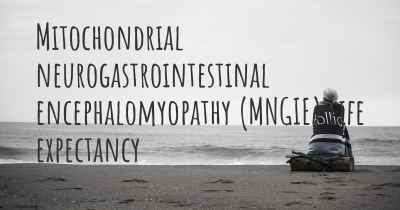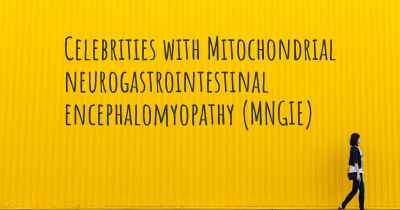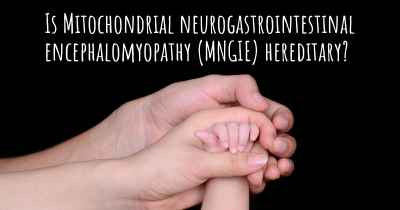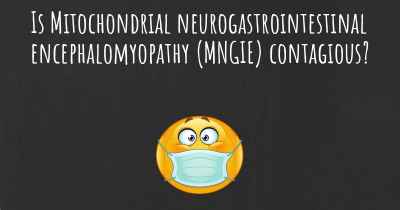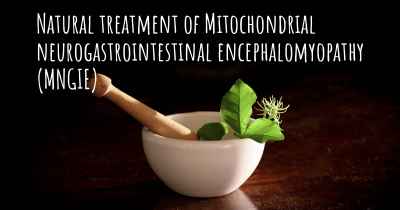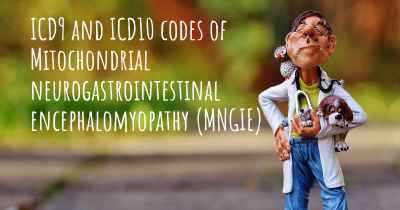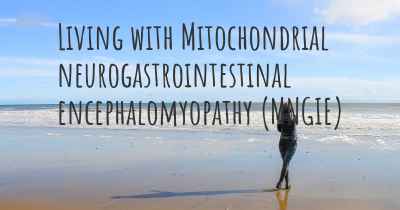2
What are the best treatments for Mitochondrial neurogastrointestinal encephalomyopathy (MNGIE)?
See the best treatments for Mitochondrial neurogastrointestinal encephalomyopathy (MNGIE) here
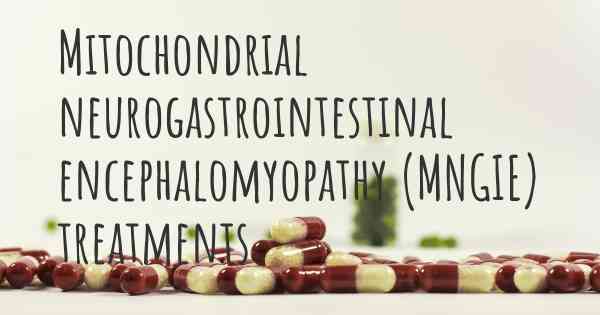
Mitochondrial neurogastrointestinal encephalomyopathy (MNGIE) is a rare genetic disorder characterized by the progressive degeneration of multiple organ systems, including the nervous system, gastrointestinal tract, and muscles. It is caused by mutations in the TYMP gene, which leads to the deficiency of an enzyme called thymidine phosphorylase. This enzyme plays a crucial role in the breakdown of thymidine, a building block of DNA. The accumulation of thymidine and other toxic metabolites in the body's tissues results in the symptoms associated with MNGIE.
Currently, there is no cure for MNGIE, and treatment primarily focuses on managing the symptoms and improving the patient's quality of life. However, several therapeutic approaches have shown promise in alleviating the symptoms and slowing down the progression of the disease.
Hematopoietic stem cell transplantation (HSCT) has emerged as a potential treatment option for MNGIE. This procedure involves replacing the patient's faulty bone marrow cells with healthy donor cells. HSCT has shown promising results in some MNGIE patients by restoring thymidine phosphorylase activity and reducing the toxic metabolite levels. However, it is important to note that HSCT is a complex procedure with potential risks and complications, and its effectiveness may vary among individuals.
Liver transplantation has also been explored as a treatment option for MNGIE. Since the liver is the primary site of thymidine phosphorylase production, replacing the patient's liver with a healthy donor organ can potentially restore enzyme activity and reduce the toxic metabolite buildup. However, the long-term efficacy and safety of liver transplantation in MNGIE are still being evaluated, and it is not widely available as a treatment option.
Enzyme replacement therapy (ERT) is another approach being investigated for MNGIE. ERT involves administering the missing enzyme, thymidine phosphorylase, to the patient to compensate for the deficiency. Although early studies have shown some promising results, further research is needed to determine the optimal dosage, administration route, and long-term effects of ERT in MNGIE.
Symptomatic management plays a crucial role in improving the quality of life for individuals with MNGIE. This may involve a multidisciplinary approach, including nutritional support, physical and occupational therapy, pain management, and treatment of specific symptoms such as gastrointestinal dysfunction, muscle weakness, and neuropathy.
In conclusion, while there is currently no cure for MNGIE, ongoing research and clinical trials are exploring various treatment options to alleviate symptoms and slow down disease progression. HSCT, liver transplantation, ERT, and symptomatic management strategies are being investigated, but their efficacy and long-term outcomes are still being evaluated. It is essential for individuals with MNGIE to work closely with a healthcare team experienced in managing mitochondrial disorders to determine the most appropriate treatment approach based on their specific needs and circumstances.
Diseasemaps
